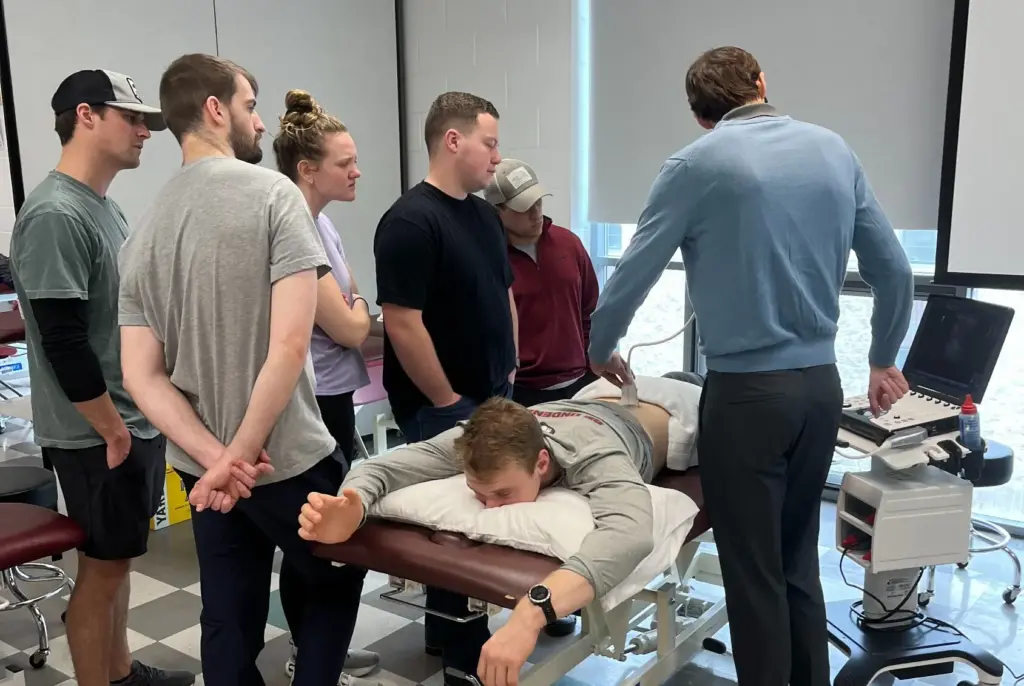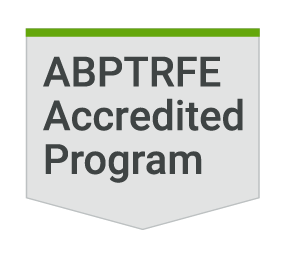
- Degree Level
- Graduate
- Degrees Offered
- Certificates
- school/college
- College of Health Sciences

Orthopaedic Residency Program
The mission of the Orthopaedic Residency Program at Arcadia University is to develop and produce expert physical therapists who provide best practice using evidence in the examination, evaluation, diagnosis, prognosis, intervention, and outcome of musculoskeletal conditions.
Graduates of the residency will demonstrate orthopaedic competency in compliance with the Description of Specialty Practice as described by the American Board of Physical Therapy Specialties (ABPTS). This planned program of post-professional clinical and didactic education is structured to advance the knowledge and skills of the physical therapist in orthopaedic content.
This program is designed to provide sufficient content, knowledge, and skills to prepare residents to sit for the orthopaedic clinical specialization examination offered by the American Physical Therapy Association’s Board of Physical Therapy Specialties.
Didactic Component
The didactic component of the program consists of six 2-credit courses.
- PT680 Evidence Based Practice & Clinical Reasoning
- PT656 Neuromuscular Tissue & Motor Control
- PT681 Cervical-Thoracic Spine, & Temporomandibular Joint
- PT682 Upper Extremity: Shoulder, Elbow, Wrist, & Hand
- PT683 Lumbar Spine, Sacroiliac Joint, & Pelvic Floor
- PT684 Lower Extremity: Hip, Knee, Ankle, & Gait
Laboratory Sessions: The courses in the program utilize a hybrid model of online learning with integrated manual skills laboratory sessions. The manual skills laboratory sessions will occur 4 weekends per year. The program is highly interactive and capitalizes on the wealth of knowledge clinicians bring with them.
Mentoring Component
- Arcadia University has 40 approved clinical partner sites.
- To complete the program, residents need to gain employment at one of our clinical partner sites.
- All residents are required to complete 150 hours of patient mentoring.
Benefits to the resident include enhancing professional development, advancing knowledge, and skill acquisition, and learning via direct mentoring. Opportunities exist to teach in the entry-level DPT curriculum, and to serve as mentors, and lecturers for the residency curriculum upon completion of the residency.
Become an Expert Clinician
Become an expert clinician and prepare to sit for the orthopaedic clinical specialization examination offered by the American Physical Therapy Association’s Board of Physical Therapy Specialties.
The Arcadia University Orthopaedic Residency is accredited by the American Physical Therapy Association as a post-professional residency program for physical therapists in Orthopaedics.

What to Expect
- Applications for admission are accepted on a rolling basis.
- Clinical mentoring occurs at the resident’s current clinical practice site.
- Didactic curriculum utilizes a hybrid model of online learning and onsite manual skills laboratory sessions.
- Opportunities for involvement in research based on interest.
- Opportunities exist to teach in the entry-level DPT curriculum, and to serve as mentors, and lecturers for the residency curriculum upon completion of the residency.
- Residents able to qualify for deferment of student loans.
- The 18-credit residency program is one year in length.
- Benefits to the resident include enhancing professional development, advancing knowledge, and skill acquisition, and learning via direct mentoring.
- Residents will graduate with a Musculoskeletal Physical Therapy Certificate from Arcadia and be prepared to sit for the orthopaedic clinical specialization examination offered by the American Physical Therapy Association’s Board of Physical Therapy Specialties.
- Tuition cost for 2024-25 and 2025-26: $9,960 plus semester fees.
*Residents have successfully completed the Arcadia University Orthopaedic Residency requirements at a rate of 98% (through 2024).
**Graduates of the Arcadia University Orthopaedic Residency have achieved a first time pass rate of 96% on the OCS exam offered by the ABPTS (through 2024).
Musculoskeletal Physical Therapy Certificate Option
For those looking for advanced clinical, and didactic orthopaedic physical therapy education, but unable to commit to the mentoring component, the Musculoskeletal Physical Therapy Certificate is an option:
- The 12-credit program can be completed in one to three years.
- There is no required course sequence.
- Coursework follows the Orthopaedic Residency Program.
Featured Courses (Orthopaedic and Musculoskeletal Physical Therapy)
Evidence Based Practice and Clinical Reasoning
Required Course
This course will provide the physical therapist with a systematic method for critically analyzing and evaluating current research for integration into clinical practice. Clinical decision-making will be guided by relevant literature reviews to minimize practice variation, minimize health care costs, and identify potential or actual harm to patients.
Upper Extremity: Shoulder, Elbow, Wrist, and Hand
Required Course
This course provides a comprehensive background of the anatomy and biomechanics of the shoulder, elbow, wrist, and hand. Content will also address musculoskeletal imaging, functional anatomy, assessment, and outcome tools relevant to this body region. Common conditions in addition to appropriate medical screening will be discussed. Emphasis will be placed on best practice and current evidence to support examination and intervention techniques of upper extremity.
Lumbar Spine and Sacroiliac Joint
Required Course
This course provides a comprehensive background of the anatomy and biomechanics of the lumbar spine and sacroiliac joint. Content will also address musculoskeletal imaging, functional anatomy, assessment, and outcome tools relevant to this body region. Common conditions in addition to appropriate medical screening will be discussed. Emphasis will be placed on best practice and current evidence to support examination and intervention techniques of lumbar spine and sacroiliac joint.
Neuromuscular Tissues and Motor Control
Required Course
This course reviews the basic structure and function of various tissues within the neuromusculoskeletal system. These will include muscle, nerve, and various connective tissues such as tendon, ligament, cartilage and bone. Using the Physical Stress Theory as a guiding model, the effects of altered patterns of use, common pathologies, and common interventions will be discussed for each tissue. The neural control of multi-joint limb movement will be discussed using current literature on motor control, cognition and motor learning including discussion of the relevance of the research on clinical practice. Traditional and contemporary theories will be contrasted to assist in developing direct intervention strategies using skill acquisition theories. Emphasis will be placed on reading and applying current basic science literature to justify and guide the practice of physical therapy.
Cervical-Thoracic Spine and Temporomandibular Joint
Required Course
This course provides a comprehensive background of the anatomy and biomechanics of the cervical-thoracic spine and temporomandibular joint. Content will also address musculoskeletal imaging, functional anatomy, assessment, and outcome tools relevant to this body region. Common conditions in addition to appropriate medical screening will be discussed. Emphasis will be placed on best practice and current evidence to support examination and intervention techniques of cervical-thoracic spine and temporomandibular joint.
Lower Extremity: Hip, Knee, Ankle, and Gait
Required Course
This course provides a comprehensive background of the anatomy and biomechanics of the hip, knee, ankle, and foot. Content will also address musculoskeletal imaging, functional anatomy, assessment, and outcome tools relevant to this body region. Common conditions in addition to appropriate medical screening will be discussed. Emphasis will be placed on best practice and current evidence to support examination and intervention techniques of the lower extremity.


